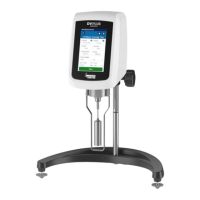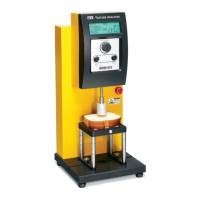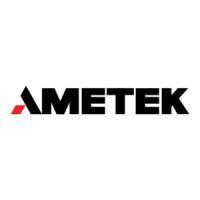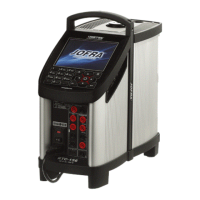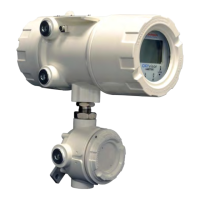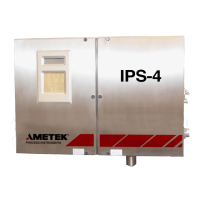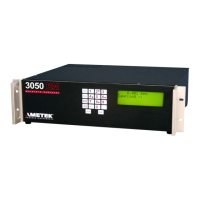M19-2101 REVISION 2.0 DVNEXT RHEOMETER - OPERATIONAL MANUAL
A.4 Verifying calibration
• Determine the appropriate sample volume. Refer to Table A-1 to determine the correct sample volume
required for the spindle to be utilized.
• Select a AMETEK Brookfield Viscosity Standard fluid that will give viscosity readings between 10% and
100% of full-scale range. Refer to Appendix B for viscosity ranges of cone spindles. AMETEK Brookfield
uses mineral oil viscosity standard fluids to calibrate Wells Brookfield Cone/Plate Rheometers at the
factory. AMETEK Brookfield recommends that customers use mineral oil viscosity standard fluids when
you perform a calibration check.
• If you decide to use a silicone viscosity standard fluid, do not use a fluid with a viscosity value greater
than 5000 cP with a Cone/Plate. AMETEK Brookfield oers a complete range of mineral oil viscosity
standards suitable for use with Cone/Plates for viscosities above 5,000 cP or shear rates above 500
sec-1; see Table E-2 in Appendix F for a list of available fluids.
• It is best to use a viscosity standard fluid that will be close to the maximum viscosity for a given cone
spindle/speed combination.
• Example: DVNext LV Rheometer, Cone Spindle CPA-42Z, AMETEK Brookfield Viscosity Standard
having a viscosity of 9.7 cP at 25°C.
• At 60 RPM, the full-scale viscosity range is 10.0 cP. Thus, the Rheometer reading should be 97%
torque and 9.7 cP viscosity ± 0.197 cP. The allowable error (±0.197 cP) is a combination of Rheometer
accuracy and fluid tolerance (refer to Interpretation of Calibration Test Results in Appendix F).
• With the motor o, remove the sample cup and place the viscosity standard fluid into the cup.
Table
A-1
CONE PART NO. SAMPLE VOLUME
CPA-40Z or CPM-40Z 0.5 mL
CPA-41Z or CPM-41Z 2.0 mL
CPA-42Z or CPM-42Z 1.0 mL
CPA-51Z or CPM-51Z 0.5 mL
CPA-52Z or CPM-52Z 0.5 mL
• Attach the sample cup to the Rheometer and allow enough time for the sample, cup and cone to reach
temperature equilibrium (25°C ±0.1°C).
• Go to Configure Viscosity. Set the desired parameter, e.g. Speed, Spindle, Sample ID, etc. Set the End
Condition for Time 00:00:00. Press Run.
• Measure the viscosity and record the readings in both % torque and centipoise (cP).
• Verify that the viscosity reading is within the allowable 1% deviation, as explained earlier, for the specific
viscosity standard fluid(s) that you are using.
• The CPE, CPM, or CPA designation on the cone spindle indicates use with Electronic Gap Setting Cone/
Plate Rheometers/Rheometers only.
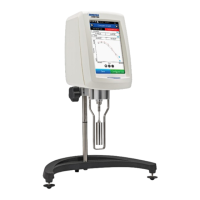
